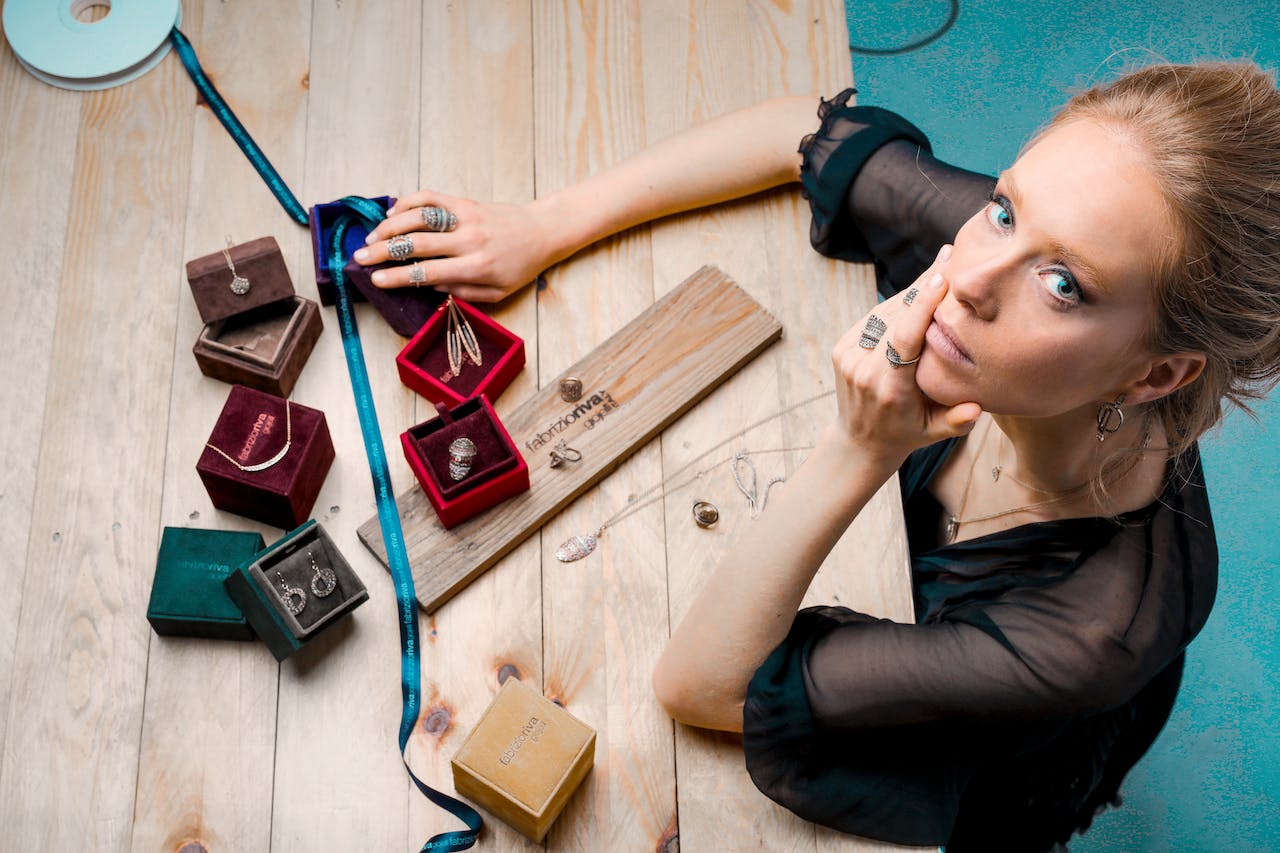There is no one path to success as a jewellery designer. However, if you want to make it in this industry, there are a few things you can do to increase your chances of achieving your goals. In this blog post, we will discuss some essential tips for becoming a successful jewellery designer. So whether you are just starting out or you have been designing jewellery for years, read on for some valuable advice!
Find Your Target Clientele
Every successful jeweller has a niche. If you try to be everything to everyone you will be nothing but bland and forgettable. Instead aim to stand out to your particular niche clientele. It helps to envisage your ideal customer, and give her a name and personality. For example, that could be Carol the CEO, or Hannah the art student. When you have your brand persona it is so much easier to create pieces that you know they will love and a brand that speaks to them.
An alternative approach to niche marketing is to do things differently from your competitors. Find a customer’s pain point and respond to it. For example engagement rings by Blue Nile allow customers to design their own ring, working closely with a jewellery designer. This is great for those customers who look everywhere for exactly the perfect ring they have envisaged.
Think brand
Now that you have an ideal customer, it’s a simple step to translate that into a coherent brand image for your products and associated marketing and packaging materials. People don’t just buy a piece of jewellery, they buy something that resonates and makes them feel special. Every part of your product and promotion needs to understand that customer need and deliver on the promise implied.
The jewellery itself is central to your brand promise. It should be well-made and of good quality. This doesn’t mean that it needs to be expensive, but it should be made from good materials and put together carefully. Your customers need to be able to trust that your jewellery will last and not fall apart after a few wears.
Keep learning
There are always new technologies and new methods of design that you can learn about. By keeping up with the latest trends, you will be able to create designs that are both unique and contemporary. This will help you stand out from the competition and succeed as a jewellery designer.
Networking and staying up-to-date with industry news and contacts is another important form of learning. Stay current. Watch the shows and see who has won the latest jewellery awards. You are sure to find touches of inspiration to inform and develop your own designs.
Do Product Surveys
Never stop listening to your customers. After all, they are the ones who will be wearing your designs! One way to get feedback from them is by conducting product surveys.
Product surveys can help you understand what your customers like and don’t like about your jewellery. They can also give you insights into what kind of jewellery they would like to see in the future. What tweaks or additions could you introduce to induce customers to purchase one more piece?
Create a Collection Not Just Pieces
As a successful jewellery designer, it’s imperative that you create a coherent collection, not just individual pieces. This means thinking about how the different pieces will work together and complement each other.
It can be helpful to create mood boards or inspiration boards with images of the different elements you want to include in your collection. This will help you to see how everything will come together and also give you some ideas for new pieces.
Be serious about sales
Artists and designers often fall down when it comes to sales. Often the skill set is completely different. And of course, there is some truth in that. But if you are just starting out as a jewellery designer you will need to face up and get serious about sales.
These days online marketplaces are an excellent place to start. You can test the market with a small range of samples before increasing production. Online marketplaces are also great for testing different price points. As a minimum, your prices should cover the cost of production, including your time. But really when it comes to jewellery, price is much more often related to value and how customers want to feel about themselves.
Other sales routes include niche craft and jewellery fairs and local boutiques and craft stores. If you are establishing a reputation then art galleries and museums can be good outlets. Large companies can be approached further down the line when you have a strong portfolio. But proceed with caution and get legal advice on any contracts offered.
Wrap up
The jewellery industry continues to expand. If you find your niche group of customers and deliver real value to them, there is no reason why you should not succeed. The key is to remember that as a jewellery designer you are so much more than an artist or craftsperson, you are also a businesswoman. Balance your love of craft and design, with a love of branding, marketing and sales and you will be well on your way to becoming a successful jewellery designer.

